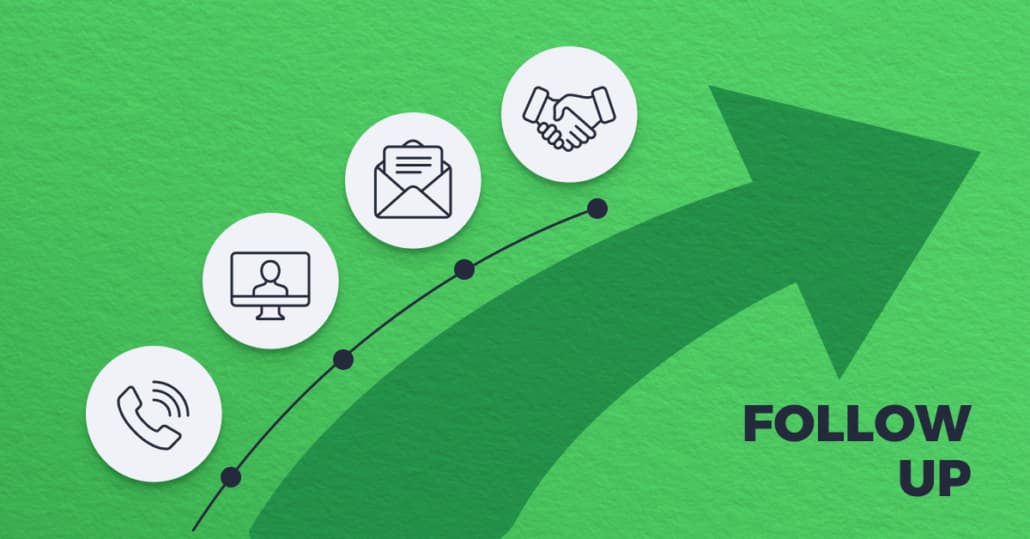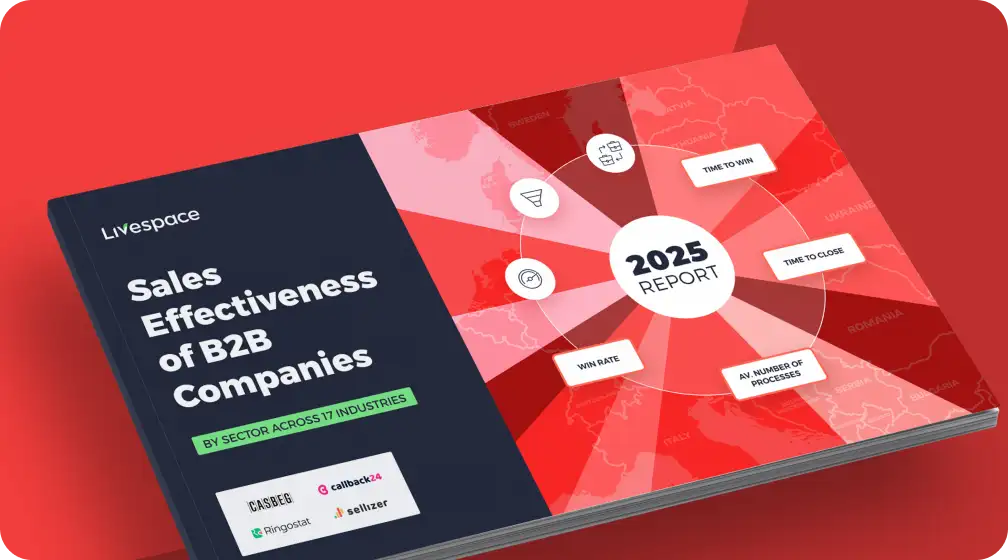Turning ‘No’ into ‘Yes’: How to Convince Your Customers to Buy from You?

Here comes the bitter truth: even if you offer the best product and services on the market, you’re likely to face customer objections from time to time. It’s inevitable – but the way you address those objections can truly make a difference for your business.
Basically, if you play it right, you can easily change the mind of those who were hesitant at the beginning. That’s precisely why we did our research and asked a few experts for their advice on how to handle customer objections. Here’s what we learned.
What are customer objections in the first place?
A customer (or sales) objection is something you can recognise immediately, as it’s an explicitly stated reason why they are not going to buy from you, at least not for the time being. The most common issues customers might have with your offer can be related to the price, usefulness of the product or service, or simply a lack of time to discuss it further with your sales reps.
It’s important to keep in mind that these objections don’t necessarily have to be a bad thing. As can be seen, the reasons why they might occur in the first place don’t seem like the end of the world—in fact, they can be handled quite easily. Provided that you’re willing to do something about them, that is.
How you respond and react to negative customer experience or rejection will speak louder about your organisational culture and salesmanship than anything else you do. Ironically, when a customer has a negative experience, that’s the best opportunity to turn them into advocates. Some of our biggest customers and advocates started out that way. Stop trying to make a sale. Just listen, understand the concerns (really read between the lines here) and solve their problem the best you can.
Jack Huang, Co-founder of Truly Experiences
How to handle customer objections, then?
Be actually prepared to handle the objections
As already mentioned, you’re likely to face customer objections anyway—so try to get ready for them in advance. Many sales agents face similar objections: regarding price, the product not being a good fit for some reason, lack of interest, being too busy, or not being “authorised” to make the decision. Instead of acting surprised when you hear that the customer is hesitant, take action! Have a chat with your sales team first to come up with possible discounts and special offers you could get your prospects interested in.
They say that getting to “yes” as soon as possible is the right thing to do. I’d say the opposite, after reading “Never split the difference” book by Chris Voss, which I strongly recommend. Hearing a true “no” from your customers allows you to reflect their objections and transform them into the value they can get. Ideally for you would be to predict those objections and prepare how you will respond to them when the moment appears. Think of “no” as an opportunity to find your customer’s pains, and ultimately make them want to buy your product or service.
Andrzej Bieda, Head of Growth at Landingi.com
Treat every objection as an opportunity to learn from
Every objection can teach you a valuable lesson—be it about your offer, the way how you present it, or the needs of your target audience, just to name a few. If you draw conclusions from every conversation with a hesitant prospect or customer, you’re not only likely to handle objections better in the future, but also improve your offer in the long run.
The key to changing someone’s mind is to understand why they said no in the first place. Customers will often be coy about the real reason they aren’t interested – sometimes it’s budget restrictions, sometimes they don’t see the value in what you’re offering.
A good way to get to the root of the ‘no’ is to work with them on this. Say “is there a way we can work out a solution that works for you?” or “was there anything you were hoping I’d show you that I haven’t shown yet?”. This puts the ball back in their court and gives you a way to find out the real reason behind the no, which in turn gives you a path towards a yes.
Alice Corner, Content Marketer at Venngage
Once you figure out possible objections – try to figure out your customers as well
Being aware of the common objections is one thing, but knowing your customers and anticipating their answers is a completely different story. Whenever you contact a prospect or an existing customer, you should know about them as much as possible. A powerful CRM system paired with at least a few dedicated integrations can make it much easier for you to collect data and access relevant insights on your customers and prospects. This way, you can have a better idea of what their concerns might be in advance.
Combining anticipation and empathy is a great way to turn a no into a yes. If you’re able to anticipate in advance which reasoning your potential customer will most likely use, you can already find a way to refute these arguments. You’re negotiating from a position of strength at this point. Of course, this doesn’t mean that you should give your prospect a bad feeling. It’s more about putting yourself in his shoes and already providing a solution for potential concerns.
For example, if you’re selling software, you might anticipate concerns about adoption within your prospect’s company: “I know at first glance the software might seem to be a bit confusing. But don’t worry. We’ve got a great customer success team and a library full of training videos and we’ll do everything to make sure your team will learn how to best use our platform.”
Max Benz, CEO and Co-Founder at suitApp
Present your offer differently
Sometimes it’s not the offer itself that will not interest the prospect—it’s the way of presenting it. The key is to make it sound as appealing as possible (yet again, you might need some insights on your interlocutor to be able to do it properly). The ways you communicate your offer might vary depending on who you are talking to, but it’s a good idea to relativize whenever possible. How exactly?
If your prospect is using numeric facts to strengthen his concerns, you should try to relativize them. You can achieve this by putting the disadvantage in relation to something else and make it so small that it is hardly worth discussing it further.
Let’s say you want to convince your potential customer that the price for a subscription is worth the price but he’s telling you that it costs more than $X per month and that it’s not affordable. A good way to make this monetary value smaller would be to argue that it’s only Y cents per month and costs less than a coffee per day. This way, your prospect can’t really argue that the price is an important factor in his or her buying decision.
Lisa Dietrich, Co-Founder at Let’s be crazy
Use testimonials as a joker
Most likely, you already have some satisfied customers. Why not make good use of that? It usually works as a solid “social proof”, since learning more about other clients and even similar use cases can give your prospect a feeling of security. As a matter of fact: showing off your customers’ recommendations has at least a few benefits, and the ability to handle common objections by using them to your advantage is definitely one of them.
You can even use customer references to handle common objections. If your prospect is telling you that they don’t need a new tool to improve their processes, you can tell them that this is exactly the same thing one of your happiest customers said to you during your first call. Now, you can take his or her case study and present it in the best way possible while adapting to your prospect’s situation. Most people are risk-averse and rather tend to buy if they know that there are similar people who’ve already successfully tested the product or service they want to buy.
Will Cannon, CEO and Founder at UpLead
Go the extra mile whenever needed
Convincing the customers that didn’t have such a great experience with your company before might be the hardest objection to handle. It’s not impossible, though. The most valuable piece of advice, in this case, is simply to “act human”. It helps to admit that you made a mistake, and you’re willing to go the extra mile to gain the customer’s trust back. For many customers, showing that you actually care is often enough to get them on your side again.
The best way to turn complaints into further sales is to be savagely honest, be completely human, call a spade a spade but…more importantly, send them a cookie!
Yes, you heard that one right. We used this “trick” to soften the blow when things completely wrong with orders. We didn’t expect it to work this well, though. We’d send a cookie with an honest note “We screwed up. We really did. We’re a fast-growing company and trying to improve, but that’s no excuse. We hope this delicious cookie helps show how sorry we are!”.
What happened? They became our evangelists, they shared it on social media, told their friends, and that went on and on.
Mark Patchett, Founder of The Ecommercere Academy (T.E.A.)
Start turning “No” into “Yes”
Handling objections is not easy—but with the right approach and a little bit of practice, you can make it much easier for our sales team. Identify a few common objections among your clients, come up with a few guidelines on how to handle them properly, and encourage your sales reps to actually follow your lead. If you have an attractive offer and a skilled sales team on board, there’s nothing you should be worried about.
Other posts

Sell Wiser, Not Harder. 3 Key Steps to Master Sales Automation

How to Carry out an Effective Follow-up Email? Ready-to-use Follow-up Email Templates






